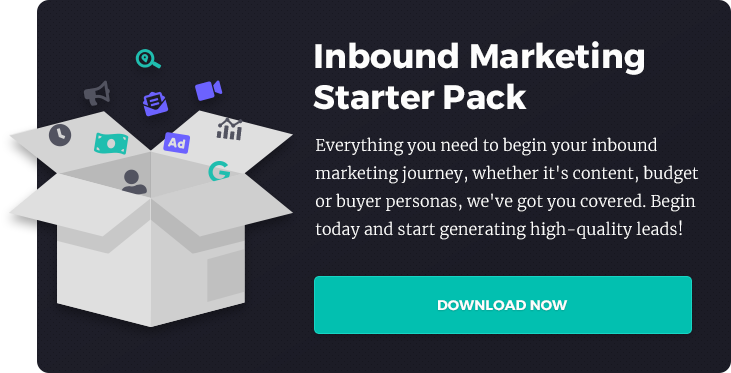In November 2020, Google announced that they’re going to be rolling out their Page Experience algorithm update in May 2021. Businesses are certainly no stranger to Google algorithm updates, however, this time Google has forewarned us about the changes and detailed what we can expect from the update.
Knowing the details of the update allows businesses to prepare their sites in advance and make sure that their traffic doesn’t drop off when the updates are deployed. Don’t worry if you’re not sure what the Page Experience algorithm is or how it’ll affect you, we’ve got you covered in this post. So, let’s get straight into it.
What is the Page Experience update?
Quite simply, the purpose of this update is to ensure that the sites ranking at the top-end of Google SERPs are those that create a user experience that people love. Rather than people landing on sites and hating their time on there from start to finish and not being able to easily navigate around as they wish.

Image Credit: AdScholars
Here’s how Google themselves describe the algorithm update…
“The page experience signal measures aspects of how users perceive the experience of interacting with a web page. Optimising for these factors makes the web more delightful for users across all web browsers and surfaces, and helps sites evolve towards user expectations on mobile.”
“We believe this will contribute to business success on the web as users grow more engaged and can transact with less friction.”
Google is looking for how usable your site is. Those that promote a top user experience will be rewarded with high rankings. So, by ensuring that your load times are quick, your site is easily accessible for all users and you have all the necessary web vitals in place to promote overall health, you’ll be best positioning yourself to reach top spot.
The importance of the algorithm update
This update is the start of a big shift in SEO. It’s well renowned that Google has always prioritised ranking brands that we love highly. They want the best of the best at the top of the SERP, that way, people can easily find solutions to their search queries and not have to troll through the abundance of results to find what they need.
For example, if you’re searching for sportswear, you’ll likely see the main players Adidas and Nike dominating proceedings. And if you’re searching for airlines (post-lockdown, of course) you’ll likely see British Airways, Emirates and Virgin Atlantic right up there too. These are the brands that we’ve all come to know and love over time.
Smaller businesses can’t compete with these big firms in a branding sense - and Google is starting to realise that. Therefore, rather than prioritising your brand solely, they’re starting to take into consideration how your site treats its users.

Of course, brand queries and brand impact will still play their part. However, it gives those businesses that aren’t at the head of the game the chance to still rank. Plus, rather than bumping sites up the rankings that stuff their site with backlinks, they recognise that this doesn’t create the ideal user experience and will consider that.
How to optimise your user experience
Optimise your overall site speed
Site speed is vitally important for SEO and ranking factors. Plus, it plays a huge part in user experience. Think about it, naturally, audiences are impatient and want quick-fire solutions to help them with their queries, right? With that being said, they won’t be prepared to sit around and wait for your site to load up. If it’s not quick, it’s not good.
The faster your site speed is, the better the user experience. So, how can you optimise this? By using SEO tools like SEMrush or Neil Patel, you can track your overall site health and speed. Make sure that you have no broken pages within your site and try to minimise your page load time to under three seconds for both desktop and mobile.
Ideally, for maximum user experience, these should sit under one second.
Compare with your competition
How does your user experience compare to your competition? If your site isn’t as slick and well functioning as there’s, they could be gaining an advantage on you. Therefore, we advise you to compare your top 50 pages with your main competitor to gauge how your site is performing. This may seem excessive but you want to ensure that you’re streets ahead of them, don’t you?
What are they doing well? What could they do better? What keywords are they targeting that are well interacted with? Analysing these three areas should give you a great insight into what you need to be doing yourself. Always bear in mind that you’re not there to simply match your competitors but beat them!
Optimise your design
By using reporting heatmaps, you can see how users are currently interacting with your site. This analysis allows you to see key areas of focus from your audience and areas that need optimising the most. Analysing your design is key to recognising its performance - what features are working well? What needs to be improved?
Without analysing, you could think that you have a perfectly optimised design, however, it could be holding back your business success unbeknown to your knowledge. This analysis will help you realise the quick fixes that can be made to your site for user experience improvements. Remember, just because it looks cool, doesn’t guarantee it’s going to perform well.
Red-Fern Can Help Your Business Today!
Is your business ready for the Page Experience algorithm shift in May 2021? Or, do you need a little help ensuring that your site is best-positioned to have a good chance of ranking? Don’t worry if you do - that’s where we come in!
At Red-Fern our expert team always prioritise user experience in every project that we carry out. From landing page builds to full sites, it’s an important factor of project success, therefore, we always make sure to take it seriously. Plus, we’re vastly experienced, so we can tailor bespoke projects to a wide range of unique needs and requirements.
So, if you’re not too sure about what work needs carrying out on your site, please don’t hesitate to get in touch. Sure, follow the above steps by all means - that’s what they’re there for! But if you need a little more advanced help to get your user experience where it needs to be, we’re here to help.
Book a discovery call with one of our team today! We’re always on hand to answer any questions or queries that you may have. We look forward to hearing from you.

